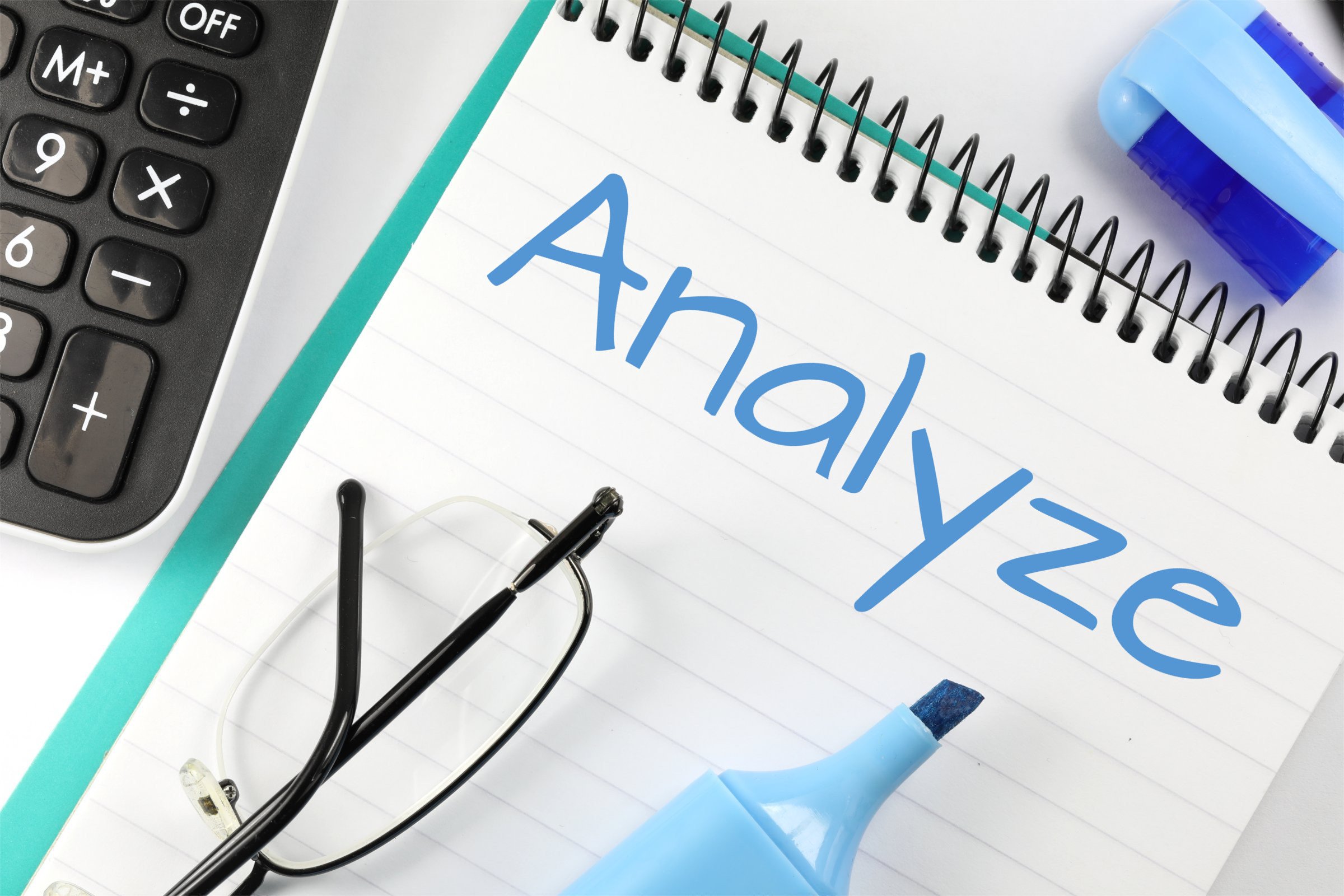In today's data-driven world, the ability to analyze this and interpret complex information has become a crucial skill for businesses and individuals alike. Data analysis plays a pivotal role in decision-making processes, helping organizations identify trends, optimize performance, and gain a competitive edge. Whether you're a business owner, a student, or a professional, understanding how to analyze this effectively can transform the way you approach challenges and opportunities.
Data is everywhere, but raw information alone holds little value until it is processed and analyzed. Analyzing this allows you to uncover patterns, make predictions, and drive informed decisions. This article will guide you through the importance of analyzing this, the tools and techniques involved, and how it can benefit your personal and professional life.
Whether you're looking to analyze this for business insights, academic research, or personal growth, this comprehensive guide will equip you with the knowledge and skills to harness the power of data analysis. Let's dive in and explore how you can turn raw data into actionable insights.
Read also:Rita Oras Emmy Dress A Stunning Statement In Fashion
Table of Contents
- The Importance of Analyzing This
- Overview of Data Analysis
- Tools for Analyzing This
- Data Analysis Techniques
- Applications of Analyzing This
- Benefits of Analyzing This
- Common Challenges in Data Analysis
- Solutions to Overcome Challenges
- The Future of Analyzing This
- Conclusion
The Importance of Analyzing This
Understanding the significance of analyzing this is the first step toward leveraging its potential. In an era where businesses rely heavily on data-driven strategies, the ability to analyze this effectively can lead to transformative outcomes. Companies that invest in data analysis often experience improved decision-making, increased efficiency, and enhanced customer satisfaction.
Why Analyzing This Matters
Here are some key reasons why analyzing this is essential:
- It helps businesses identify market trends and consumer behavior.
- Data analysis enables organizations to optimize their operations and reduce costs.
- It provides insights into customer preferences, allowing for personalized marketing strategies.
- Analyzing this can improve product development and innovation.
Overview of Data Analysis
Data analysis involves the process of inspecting, cleansing, transforming, and modeling data to discover useful information. This process is critical for making informed decisions and driving business growth. Whether you're analyzing financial data, customer feedback, or market trends, the principles of data analysis remain the same.
Steps in Data Analysis
The data analysis process typically includes the following steps:
- Data collection: Gathering relevant data from various sources.
- Data cleaning: Removing inconsistencies and errors to ensure accuracy.
- Data transformation: Converting data into a suitable format for analysis.
- Data modeling: Applying statistical models to uncover patterns and relationships.
- Data visualization: Presenting findings in a clear and understandable manner.
Tools for Analyzing This
Having the right tools is crucial for effective data analysis. Several software and platforms are available to help you analyze this efficiently. Some of the most popular tools include:
Popular Data Analysis Tools
- Excel: A widely used tool for basic data analysis and visualization.
- Python: A versatile programming language with powerful libraries for data analysis.
- R: A statistical programming language designed for advanced data analysis.
- Tableau: A data visualization platform that helps create interactive dashboards.
- Google Analytics: A free tool for analyzing website traffic and user behavior.
Data Analysis Techniques
There are numerous techniques you can use to analyze this, depending on your goals and the type of data you're working with. Some common techniques include:
Read also:Miley Cyrus Husband A Comprehensive Look At Her Married Life
Descriptive Analysis
This technique focuses on summarizing and describing the main features of a dataset. It helps you understand the "what" and "how" of the data.
Predictive Analysis
Predictive analysis uses historical data to forecast future trends and outcomes. It is widely used in industries such as finance, marketing, and healthcare.
Prescriptive Analysis
This technique goes beyond predicting outcomes and suggests actions to achieve desired results. It is particularly useful for decision-making processes.
Applications of Analyzing This
The applications of analyzing this are vast and varied. Here are some examples of how different industries benefit from data analysis:
Business
Companies use data analysis to optimize supply chains, improve customer service, and enhance marketing strategies. By analyzing this, businesses can identify growth opportunities and reduce operational costs.
Healthcare
In healthcare, analyzing this helps in diagnosing diseases, predicting patient outcomes, and improving treatment plans. Data analysis also plays a crucial role in medical research and drug development.
Education
Education institutions leverage data analysis to track student performance, identify learning gaps, and personalize teaching methods. Analyzing this enables educators to improve educational outcomes.
Benefits of Analyzing This
The benefits of analyzing this are numerous and extend across various domains. Some of the key advantages include:
Improved Decision-Making
Data-driven decision-making leads to more accurate and reliable outcomes. By analyzing this, organizations can make informed choices that align with their goals.
Increased Efficiency
Data analysis helps streamline processes and eliminate inefficiencies. Whether it's optimizing resource allocation or automating routine tasks, analyzing this can lead to significant cost savings.
Enhanced Customer Experience
Understanding customer preferences and behaviors through data analysis enables businesses to deliver personalized experiences, improving customer satisfaction and loyalty.
Common Challenges in Data Analysis
While analyzing this offers numerous benefits, it also comes with its own set of challenges. Some common obstacles include:
Data Quality Issues
Poor data quality can lead to inaccurate analysis and misleading conclusions. Ensuring data accuracy and consistency is essential for reliable results.
Lack of Expertise
Data analysis requires specialized skills and knowledge. Organizations often struggle to find qualified professionals who can effectively analyze this.
Data Privacy Concerns
With the increasing amount of data being collected, ensuring data privacy and security has become a significant challenge. Organizations must comply with regulations such as GDPR and CCPA to protect sensitive information.
Solutions to Overcome Challenges
Addressing the challenges in data analysis requires a strategic approach. Here are some solutions to help you overcome common obstacles:
Invest in Data Quality
Implementing robust data cleaning and validation processes can improve data quality and reliability. Regular audits and updates can ensure data accuracy over time.
Upskill Your Team
Providing training and development opportunities for your team can enhance their data analysis skills. Encouraging a culture of continuous learning can lead to better outcomes.
Adopt Data Security Measures
Implementing strong data security protocols can protect sensitive information and ensure compliance with regulations. Regular security audits and updates can mitigate risks.
The Future of Analyzing This
The field of data analysis is rapidly evolving, driven by advancements in technology and the increasing volume of data being generated. The future of analyzing this holds exciting possibilities, including:
Artificial Intelligence and Machine Learning
AI and machine learning are transforming the way we analyze this by enabling automated and intelligent decision-making. These technologies can process vast amounts of data and uncover insights that would be impossible for humans to identify.
Big Data Analytics
As more data becomes available, big data analytics will play a crucial role in analyzing this at scale. Organizations will need to adopt advanced tools and techniques to handle the growing volume of data.
Real-Time Analysis
Real-time data analysis will become increasingly important, allowing businesses to respond quickly to changing market conditions and customer needs.
Conclusion
Analyzing this is a powerful tool that can drive business growth, improve decision-making, and enhance customer experiences. By understanding the importance of data analysis, utilizing the right tools and techniques, and addressing common challenges, you can unlock the full potential of analyzing this.
We invite you to take action by exploring the resources mentioned in this article and applying them to your own projects. Share your thoughts and experiences in the comments below, and don't forget to check out our other articles for more insights into the world of data analysis. Together, let's harness the power of analyzing this to create a better future!

